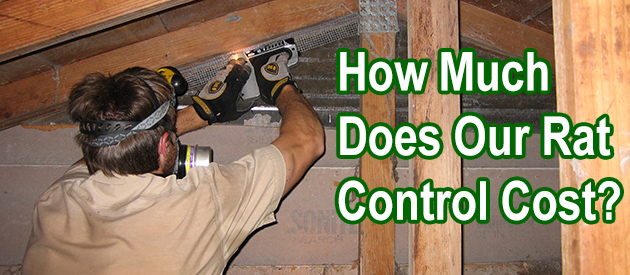East Baton Rouge County, Baton Rouge Rat Control Situation:
Good morning,I was just looking at your web site and I hope you can help. We have a wooden shed in our garden, and have found rat droppings inside. We put some poison down and they took it, happy days you say? Next day more fresh droppings so we put traps down with rasher in them, come back the next day bait is gone, they took bait without setting off the traps. So I set about adjusting the traps to make them more sensative and reset them I go out this morning and they have done it again bait gone and NO rat . Please help as this is causing no end of problems for us, many thanks Brian
David, Thanks for putting this awesome resource together. We've been fighting rats in our attic since we purchased our house a year ago. We've had three companies out - right now we have Terminix but they are just setting traps, glue boards, and bait around the house outside. We've done the fox urine thing as well. I've sealed every opening I can find, but they seem to still find a way in. Oddly, they seem to stay around the master bedroom/bath - we even hear them now under the bathtub, which is a recent development. Last year I put wire mesh screens clamped down on all vents leading up to the roof. I'm going to try calling Pest Tech as I need a complete solution. Thanks again for the informative resource.
Baton Rouge Rat Control Tip of The Week
What Is The Largest Size A Rat Can Get To Be?
With an average lifespan of about 2 - 3 years, some species of rats can grow as large as 4 pounds. But on average, almost all rats are bigger than mice. Also, the size of a rat fairly depends on the specie and the sex of the rat. Male rats usually are larger than females. They have a longer body frame with tails as long as their body and can grow as big as 2 lbs.
Domesticated rats usually do better when it comes to size mainly because they are provided with all they need to grow properly and healthily. For pet rats, an adult rat can grow to a length of 9 to 11 inches with a tail length of 7 to 9 inches. If properly managed, some large species of rats can even grow as long as 20 inches. It all depends on how well the rats are being managed and taken care of.
One of the most fascinating thing about rats is that having a large body size doesn't mean they won't be able to pass through small openings and enter into your home. Rats can compress their body in order to be able to pass through small openings. Provided the opening is wide enough to allow the easy passage of its head, it will pass through. Therefore, you shouldn't consider the fact that the rats in your neighborhood are too big to gain access to your home through small openings. Instead, you need to seal all small openings up as soon as possible to avoid a rat infestation.
When it comes to rats with large sizes, the Bosavi woolly rat is one of a kind. This specie of rat can weigh up to 3.5 lbs. and grow as long as 32 inches. Although, this particular specie of rat can only be found in volcanic caves.


